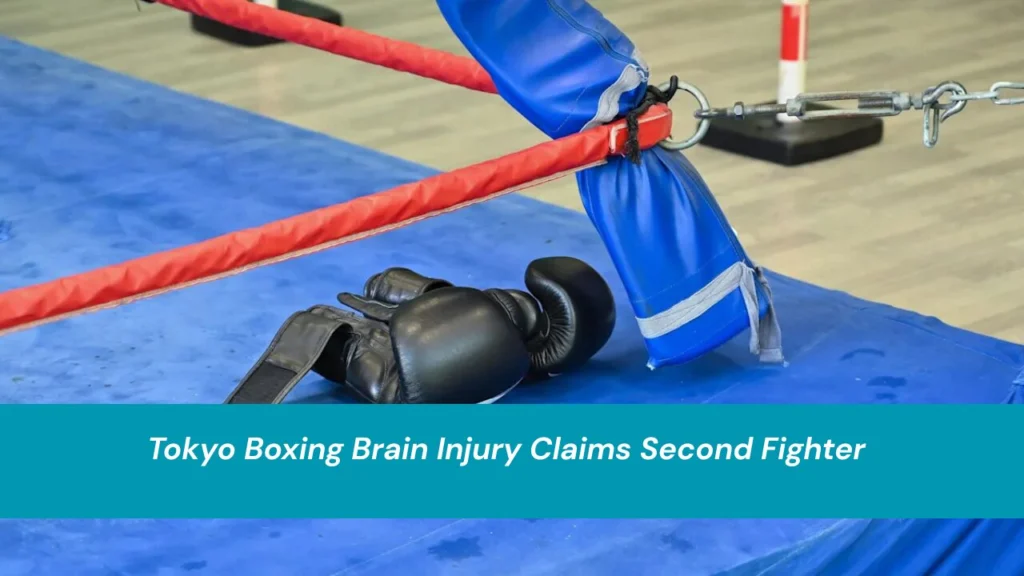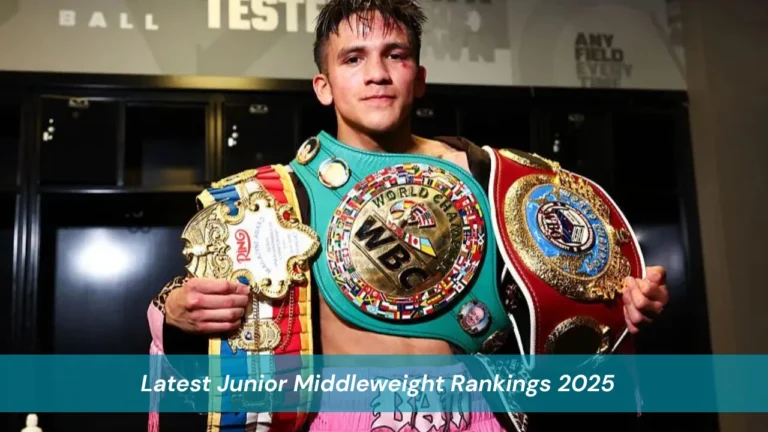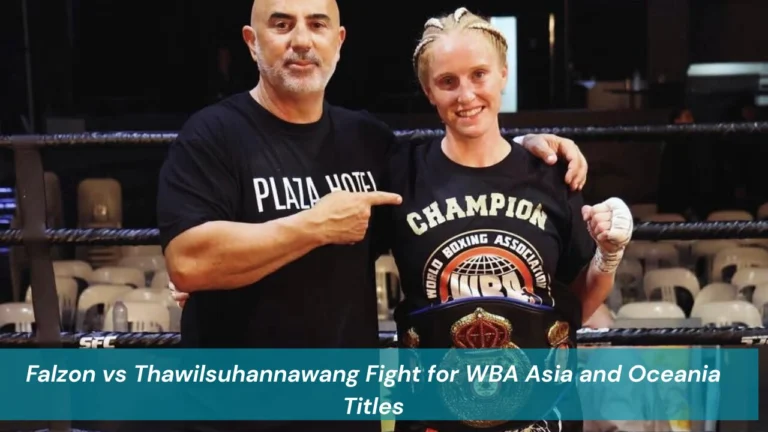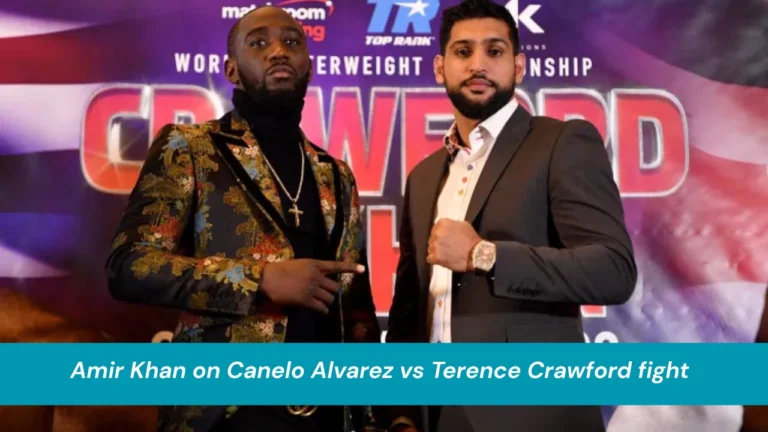In a deeply tragic turn for the sport, the Japanese boxing world is mourning once again after a second fighter, Hiromasa Urakawa, 28, succumbed to a brain injury sustained during a recent Tokyo boxing event. This devastating incident follows the loss of Shigetoshi Kotari, who died just a day earlier from a similar injury sustained on the very same fight card at Tokyo’s Korakuen Hall.
The twin tragedies have sent shockwaves through Japan’s combat sports community and reignited urgent debates over fighter safety, medical oversight, and the physical demands of professional boxing. The phrase “Tokyo boxing brain injury” has quickly become synonymous with a heartbreaking chapter in the sport’s history.
A tragic night in Tokyo
On August 2nd, at what was meant to be an exciting showcase of elite talent, Urakawa faced Yoji Saito in a hard-fought bout. The match ended in the eighth round with Urakawa being knocked out, an outcome that would later prove fatal. Ringside doctors acted swiftly, but the severity of the injury was evident. He was rushed to hospital and underwent emergency surgery for a subdural haematoma, where blood accumulates between the brain and skull.
Just one day earlier, 28-year-old Shigetoshi Kotari had passed away from similar injuries sustained in a separate match on the same card. This rare and deeply unsettling coincidence stunned even veteran observers of the sport, many of whom called the event “the darkest in modern Japanese boxing.”
Understanding subdural haematoma in boxing
In the high-contact world of combat sports, head injuries remain the greatest danger. A subdural haematoma can form when repeated blows to the head rupture blood vessels, causing internal bleeding and pressure on the brain. Symptoms may appear quickly or develop gradually, making quick medical intervention critical.
Experts, such as neurologists specializing in sports injuries, point out that combat athletes are at higher risk due to the cumulative impact of punches. Even with protective protocols, there is no way to fully remove the risk without fundamentally changing the nature of the sport. The fact that these two fatalities occurred in consecutive bouts on the same night underscores the unpredictable nature of fight-related brain injuries.
Official response from boxing authorities
The World Boxing Organisation mourned Urakawa’s passing in a heartfelt statement, calling it “heartbreaking news” arriving just days after Kotari’s death. The Japan Boxing Commission (JBC) acted swiftly by announcing that all future Oriental and Pacific Boxing Federation (OPBF) title fights will now be limited to 10 rounds instead of 12.
The move reflects a growing recognition among governing bodies that fight duration plays a significant role in cumulative head trauma. The JBC has also launched a formal investigation into the circumstances surrounding both deaths and plans to hold a review meeting in September.
The wider impact on Japanese boxing
The loss of Urakawa and Kotari is already prompting difficult conversations within the Japanese boxing community. Promoters, trainers, and fighters are grappling with the emotional toll of losing two athletes in such close succession. Some insiders believe the JBC may adopt more sweeping reforms, including more frequent medical checks during bouts, updated training safety standards, and mandatory recovery time between fights.
There is also a growing call for enhanced concussion protocols, similar to those seen in professional contact sports like rugby and American football, where head injuries are rigorously monitored. Stakeholders hope such measures could reduce the likelihood of similar tragedies without diminishing the competitive spirit of the sport.
The personal stories behind the headlines
Urakawa was more than just a fighter to his friends, teammates, and fans. Known for his relentless work ethic and sportsmanship, he had quietly built a reputation as a rising talent on the Japanese boxing scene. His match against Saito was a high-stakes opportunity, one he entered with both optimism and the determination to prove himself on a bigger stage.
Kotari, similarly beloved, was celebrated for his technical precision and calm demeanor. Both fighters leave behind grieving families, teammates, and a legacy that will forever be tied to the discussion of boxing safety in Japan.
Patterns of boxing-related fatalities in recent years
While boxing fatalities remain relatively rare, the sport has witnessed multiple high-profile deaths in the past decade, often tied to brain injuries sustained in the ring. Urakawa’s passing marks the third such loss in 2025 alone, following Irishman John Cooney’s death in February after suffering an intracranial haemorrhage in Belfast.
Sports historians note that incidents of this kind, though tragic, tend to act as catalysts for reform. Following the deaths of fighters in the 1980s and 1990s, the boxing world saw significant improvements in medical readiness and mandatory post-fight checkups. Whether this latest incident sparks a similar wave of changes remains to be seen.
The call for reform in Tokyo boxing safety
In Japan, boxing’s governing bodies face growing scrutiny from both domestic and international observers. Medical experts are urging organizations to introduce mandatory brain scans before and after fights for all professional boxers. Some have suggested restricting certain weight-class competitions where power and speed combine to create extreme head trauma risk.
Fans and commentators alike are debating whether 10-round fights will be enough to protect fighters or whether deeper systemic changes are necessary. There is also renewed discussion about investing more in ring-side medical technology, such as portable brain imaging devices that could detect bleeding instantly.
The emotional toll on the boxing community
For many in Japan’s boxing world, the back-to-back losses have been emotionally devastating. Fighters speak openly about questioning their future in the sport, and coaches are re-evaluating training regimens. The psychological impact of witnessing or being close to such tragedies cannot be overstated.
Athletes are increasingly seeking mental health support, with sports psychologists reminding them that trauma can manifest in subtle ways long after the initial event. The Japanese Boxing Commission has hinted at creating dedicated counseling resources for fighters affected by these losses.
Looking beyond Japan global parallels in combat sports safety
The Tokyo events have drawn reactions from boxing communities worldwide. Prominent boxers, trainers, and industry leaders have pointed to similar tragedies in other countries and stressed the importance of international collaboration on safety standards.
Globally, some organizations have experimented with limiting sparring contact during training, banning certain combinations of head shots, and even integrating real-time injury monitoring during matches. These innovations, while costly, could hold the key to protecting fighters without undermining the sport’s appeal.
Media coverage and public perception
Mainstream and sports media have covered the “Tokyo boxing brain injury” story extensively, with outlets like the BBC and Yahoo Sports highlighting both the human and technical aspects of the tragedy. The broad coverage has sparked conversations among casual fans who previously paid little attention to the risks fighters face.
Public sentiment reflects a complicated relationship with combat sports: the admiration for fighters’ courage is matched by concern for their wellbeing. As awareness grows, so too does pressure on organizations to take visible, impactful action.
Remembering Urakawa and Kotari
Despite the focus on policy and safety, at the heart of this tragedy are two men whose dreams were cut short. Tributes continue to pour in on social media, boxing forums, and memorial events. Fellow fighters have dedicated training sessions and upcoming bouts to their memory, often wearing armbands or incorporating symbols of remembrance into their gear.
These gestures serve as reminders that beyond the sport’s business and spectacle, boxing is built on human stories of ambition, sacrifice, and shared passion.
FAQs
What is a subdural haematoma in boxing?
A subdural haematoma occurs when blood collects between the brain and the skull, often due to ruptured blood vessels from repeated or powerful impacts. In boxing, this usually results from head punches that cause rotational or direct trauma.
How has the Japan Boxing Commission responded to these deaths?
The JBC has shortened OPBF title bouts from 12 rounds to 10, launched an investigation, and plans to discuss further safety reforms in September.
Are such injuries common in boxing?
While concussion and lesser head injuries are not unusual, fatal incidents from brain bleeding are comparatively rare, especially two in such quick succession. This rarity is part of why the Tokyo event has drawn so much attention.
Could shorter matches prevent fatalities?
Reducing match duration can lower cumulative head trauma, but experts caution that no measure can completely eliminate the risk without fundamentally altering boxing’s nature.
What changes might we see in the sport after this incident?
Possible reforms include stricter medical checks, improved concussion protocols, and the use of advanced ringside diagnostics. Japan’s current review could introduce enhanced safeguards for fighters’ health.
Conclusion
The twin tragedies at Tokyo’s Korakuen Hall will be remembered not only for the heartbreaking loss of Hiromasa Urakawa and Shigetoshi Kotari but also for the urgent questions they raise about fighter safety. The Tokyo boxing brain injury narrative is now intertwined with calls for reform, innovation, and greater care for athletes both inside and outside the ring.
Whether through technological investment, rule changes, or medical oversight, Japan’s boxing authorities are under pressure to honor the memories of these fighters with lasting action. For fans, fighters, and officials alike, the hope is that such devastating losses never have to be repeated.
If you want to stay informed on developments in boxing safety standards and upcoming reforms, bookmark our page and visit Boxing Essential to explore more.




